By Kimberly Zhe and Dana Crucil
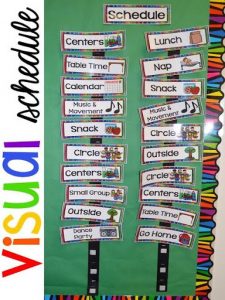 Visual supports help learners in multiple ways! Visuals can help create predictability and serve as prompts to assist in learning and increasing appropriate behavior, especially for visual learners.
Visual supports help learners in multiple ways! Visuals can help create predictability and serve as prompts to assist in learning and increasing appropriate behavior, especially for visual learners.
Visual Support #1: The Visual Schedule
Using a visual schedule helps learners become more organized and better prepared to meet expectations. They use a series of pictures to communicate a series of activities or the steps of a specific activity. They are often used to help children understand and manage daily events in their lives. They can be created using pictures, photographs, or written words, depending upon the child’s ability.
Visual schedules help provide predictability and reduce stress associated with change in routine. Schedules can be created to be written or pictures.
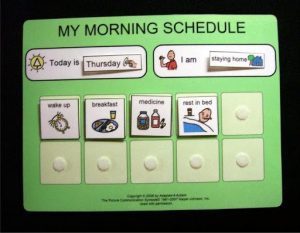 Visual Support #2: Choice Boards
Visual Support #2: Choice Boards
A choice board is a graphic organizer that allows learners to choose different ways to learn about a particular concept. Choice boards are effective in many situations, including food or drinks, reinforcers, activities or actions, places, people, toys, materials/supplies.
How to implement:
Use pictures, symbols, text, or objects, depending on the learner’s language and cognitive abilities, to create a board.
The learner will show you their choice with his or her motor and communication skills. Some learners will need larger choice board icons so that they can point or look at the option they want. Others will be able to grab a Velcro symbol card off of a more tightly arranged choice board and hand it to you.
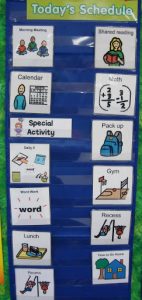 Show the learner the choice board and, if needed, read the choices aloud, pointing to each one as you say the word.
Show the learner the choice board and, if needed, read the choices aloud, pointing to each one as you say the word.
Ask the learner to make a choice.
Wait for the learner to show you which item they want by either pointing, removing the choice and handing it to you, or verbally choosing.
Tip: Make sure all choices presented to the learner are available.
Visual #3: Token Systems/Reinforcement System
A token economy is a system of contingency management based on the systematic reinforcement of target behavior. The reinforcers are symbols or tokens that can be exchanged for other reinforcers.
Within an educational setting, a token economy is a system for providing positive reinforcement to children by giving them tokens for completing tasks or achieving goals, such as spelling a certain number of words correctly, saying hello to their facilitator in the morning, or playing nicely with their peers.

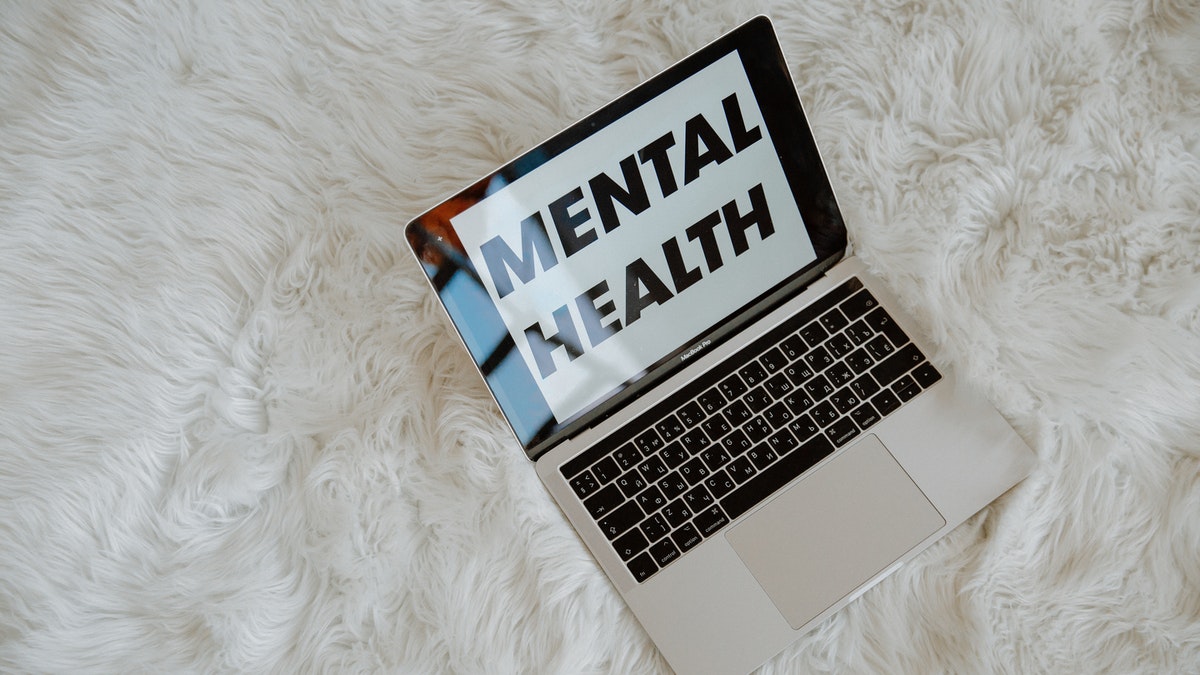








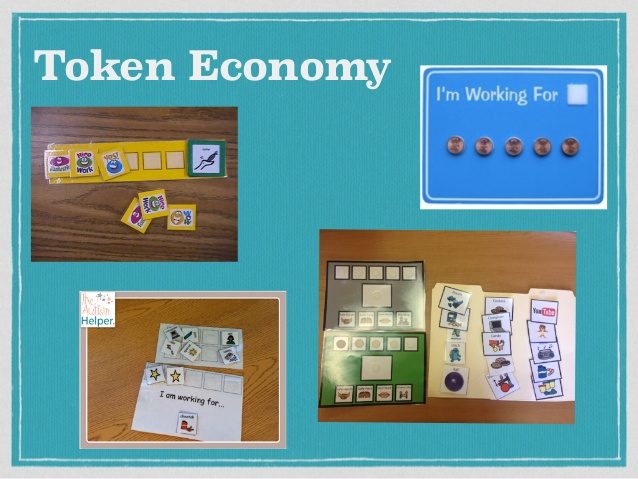
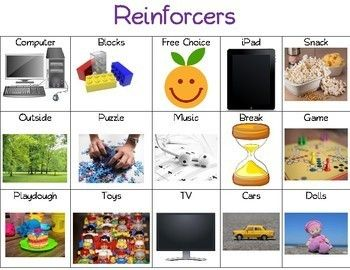
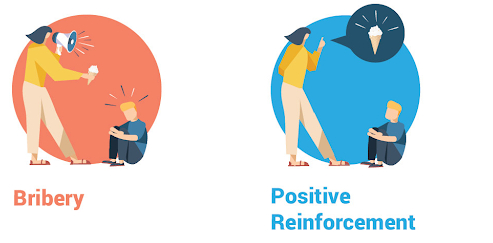 Bribery
Bribery
 Visual supports help learners in multiple ways! Visuals can help create predictability and serve as prompts to assist in learning and increasing appropriate behavior, especially for visual learners.
Visual supports help learners in multiple ways! Visuals can help create predictability and serve as prompts to assist in learning and increasing appropriate behavior, especially for visual learners. Visual Support #2: Choice Boards
Visual Support #2: Choice Boards Show the learner the choice board and, if needed, read the choices aloud, pointing to each one as you say the word.
Show the learner the choice board and, if needed, read the choices aloud, pointing to each one as you say the word.